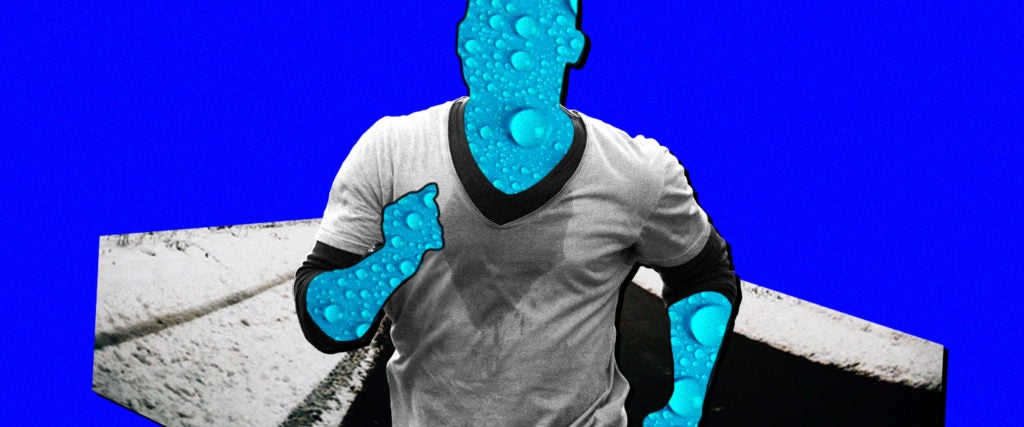Like many sufferers of 2020, I started pumping iron in a determined pursuit of happy chemicals. In the beginning, sweat streamed from my glands, propelled by searing summer heatwaves. But when winter arrived and temperatures plummeted, my sweat holes dried up. Now, no matter how much I pump, they refuse to gush. Does that mean my workouts are suddenly less effective? And does more sweat mean more calories burned?
“Sweating doesn’t define the quality of your workout,” says decorated personal trainer Jonathan Jordan, easing my concerns. “Sweating is the body’s way of regulating your body temperature. Fit people tend to sweat more, because their cooling system is more efficient and kicks in sooner than less fit folk. Now, you do have to be careful when working out in hot temperatures and sweating a lot, because you can dehydrate, and that can make you temporarily look and feel leaner, which may be why we wrongly associate sweating with the effectiveness of a workout.”
Regardless of your intensity while pumping iron, how much you sweat during a workout depends on all kinds of factors, none of which have much to do with how effective your grinding is. For example, men tend to sweat more than women, younger people sweat more than older people and bigger people sweat more simply because their bodies generate more heat. Likewise, genetics can influence how much your glands leak.
But if sweat has virtually nothing to do with the success of your workout, then what are some signs of a good session? A little soreness (but not too much), feeling like you pushed yourself and being in a better mood. In the end, just be real with yourself — you know whether you gave it your all or not.
Now you can quit sweating about sweating and start sweating… or not sweating, if it’s cold outside.

